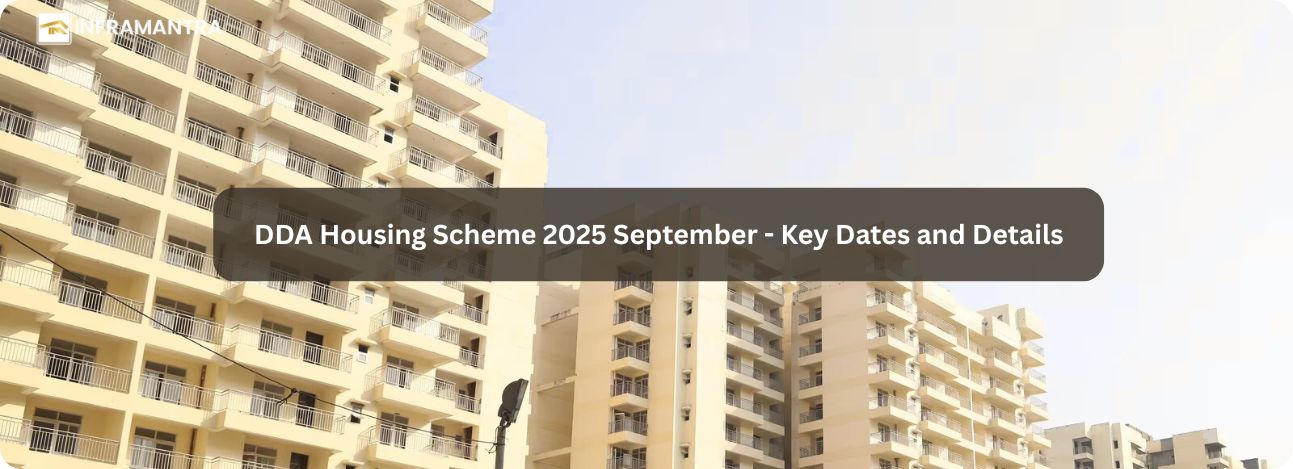The Delhi Development Authority (DDA) is committed to addressing the growing housing needs in Delhi. By launching affordable housing schemes, the DDA provides an opportunity for individuals and families across different income groups to secure a home in the capital. The DDA Housing Scheme allows people to apply for flats online, making the entire process transparent and hassle-free. Whether you’re a first-time homebuyer or someone looking for an upgrade, these schemes offer affordable flats that cater to various sections of society.
DDA Housing Scheme 2025 Overview
The DDA has introduced multiple housing schemes over the years, targeting different income groups, from economically weaker sections (EWS) to middle and high-income groups. The authority ensures that the allocation process is transparent, with flats being allocated through a computerized draw. All application submissions, including the issuance of demand letters, possession letters, and conveyance deeds, are handled online.
DDA Affordable Housing Scheme 2025
In line with its ongoing efforts to provide affordable housing options, the DDA launched a new scheme in 2025. This special housing scheme offers 110 flats in key areas of Delhi, such as Vasant Kunj, Dwarka, Rohini, Ashoka Pahadi, and Jahangirpuri. These flats are available under the Premium Housing Scheme 2025, which was approved in a meeting chaired by Lieutenant Governor VK Saxena on July 11, 2025. The flats will be allotted through an e-auction process, ensuring a fair and transparent distribution.
Additionally, the DDA launched the Apna Ghar Housing Scheme 2025 on May 27, 2025. This scheme offers 7,500 units with discounts on different categories of flats. For example, LIG flats come with a 25% discount, while EWS, MIG, and HIG flats are available with a 15% discount.
DDA Jan Sadharan Awaas Yojana 2025
One of the most anticipated housing schemes, DDA Jan Sadharan Awaas Yojana 2025, was launched on September 11, 2025. This scheme offers 1,172 affordable flats located in various parts of Outer Delhi. Designed to benefit low-income families, the scheme specifically targets the EWS (Economically Weaker Section) and Janta category. Unlike other schemes, flats under this scheme will be allocated on a first-come, first-served basis.
Here are the key dates and details:
- Launch Date: 11th September 2025
- Registration Start Date: 11th September 2025
- DDA Flat Booking Start Date: 22nd September 2025
- DDA Housing Scheme 2025 last Date: 21st December 2025
How to Apply for DDA Jan Sadharan Awaas Yojana 2025?
To apply for the scheme, follow these simple steps:
-
Visit the Official DDA Website: Go to the DDA’s official website at https://eservices.dda.org.in/.
-
Find the Housing Scheme: On the homepage, locate the housing scheme link and click on it.
-
Register for the Scheme: Once you’ve clicked the link, select ‘Apply Here’ to proceed with the registration.
-
Pay the Registration Fee: The registration fee is ₹2,500 (inclusive of GST), which is refundable but is required to participate in the booking process.
-
Check Flat Details: Before submitting your application, review all necessary details about the flats, such as their location, size, price, and layout.
Things to Keep In Mind While Applying for DDA Housing Scheme 2025
When applying for the DDA Jan Sadharan Awaas Yojana 2025, there are several key details to keep in mind to ensure a smooth application process:
- Login Credentials: If you already have a login ID from previous DDA housing schemes, you don’t need to create a new one. You can use your existing login credentials for the DDA Apna Ghar Awas Yojana 2025.
- Registration Requirement: If you’ve already registered for earlier DDA schemes like DDA Sabka Ghar Awaas Yojana 2025 or Diwali FCFS 2023, you don’t need to register again. However, first-time applicants will need to pay a registration fee of ₹2,500 to become eligible for booking a flat.
- Booking Process: The first-come, first-served principle governs the booking of flats. Registering early does not provide any priority. Flats will be allocated to those who complete the booking process first, and payment must be made within a 15-minute window once bookings open.
- Flat Viewing: While you cannot buy the sample flat furniture or fixtures, you can visit the site to see sample flats. The DDA provides contact information on its website for arranging site visits and finding out more about the flats on offer.
- Registration Fee: The registration fee of ₹2,500 is non-refundable and non-transferable. It is a one-time payment to participate in the scheme.
- Booking Multiple Flats: You can apply for more than one flat using the same ID, but only one flat can be booked at a time. Once the booking process for one flat is complete, you can proceed to book another flat.
- Payment Method: The registration and booking amounts must be paid via internet banking, debit card, or credit card. Ensure your bank account or credit card has sufficient funds or credit limit for a smooth transaction.
- No Restrictions on Property Ownership: There are no restrictions based on prior ownership of property. You are eligible to apply even if you already own land or a flat in Delhi.
- Interest Rate for PwD Applicants: For persons with disabilities (PwD), the hire-purchase mode of allotment charges a simple interest rate of 10% per annum, which is similar to how housing loans work.
To know more about real estate latest trends and updates, keep reading Inframantra blogs and articles. One of the best real estate companies in Gurgaon, Delhi, Pune, Noida, and Jaipur, Inframantra has a team of expert property advisors who work alongside top real estate developers in the city. We have a huge inventory of the best properties in the prime areas of your city offering a lifestyle of unmatched comfort and luxury. If you are planning to own a home in the near future, Inframantra is here to help.
You may also like to read:
YEIDA Residential Plot Scheme 2025: Notified Areas, Eligibility & How to Apply Online










